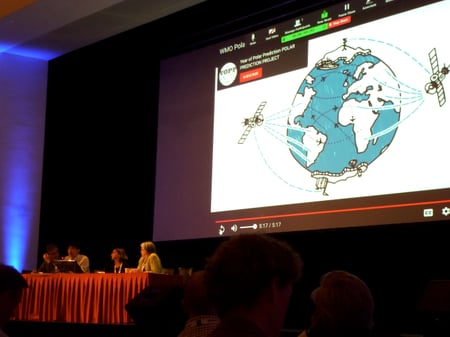The Arctic Observing Summit (AOS) 2018 was held at Davos Congress Centre in Switzerland from 24 to 26 June 2018.
The AOS is a biennial event to consider a sustainable Arctic observing network among scientists, international organizations, and public sectors. There was a panel to discuss "Observations for predictions: From sub-seasonal to the climate scale" which aims to explore the types of observations and networks needed to inform and validate predictions over a range of time scales, drawing on specific examples to illustrate how recent advances may be applicable in the Arctic. Jun Inoue from National Institute of Polar Research, Japan, was one of panelists in this panel. For more skillful predictions of weather and ice-ocean conditions, developments of numerical models are of course important. In addition to this, preparing better initial fields for the predictions is also an effective way. The Year Of Polar Prediction (YOPP) from May 2017 to mid-2019, will provide the most valuable real time observation data from the Arctic region for the numerical weather predictions. Data denial experiments, so called as Observing System Experiments (OSEs), can evaluate the impact of those additional Arctic observations on extreme weather events within and outside of Arctic, contributing to coordination of the sustainable Arctic observing network. The panelists discussed following issues with audience:
- How are real-time and non-real-time observations used for modeling efforts?
- What kind of Arctic observations are used for seasonal forecasts?
- How can end-users of weather forecasts contribute to strengthening the Arctic observing network?
- How to collaborate with indigenous people
- Toward the YOPP legacy
Those dialogues would useful for considering the future sustainable Arctic network.
Jun Inoue, NIPR(Principal Investigator(PI) of Theme 1)





